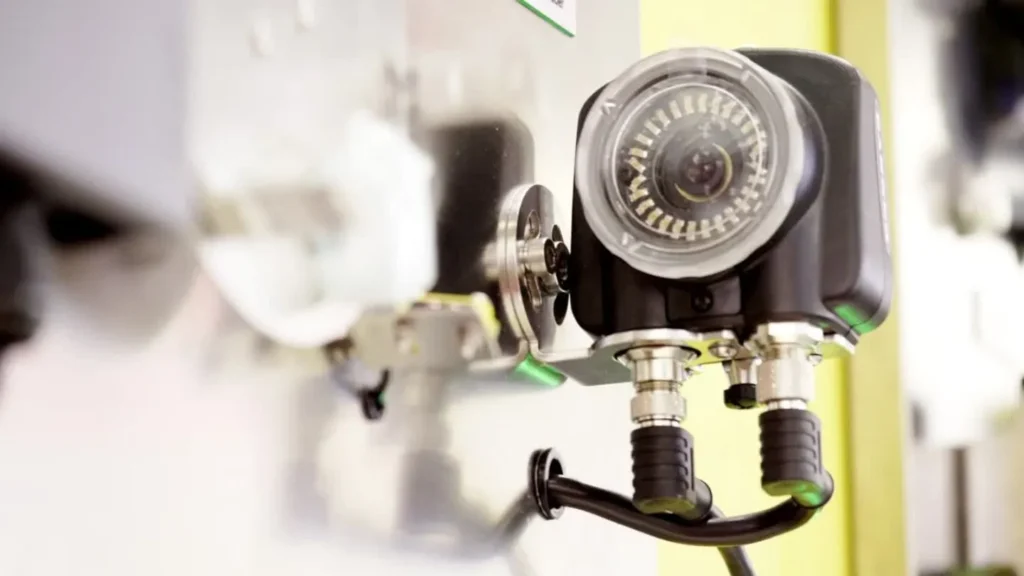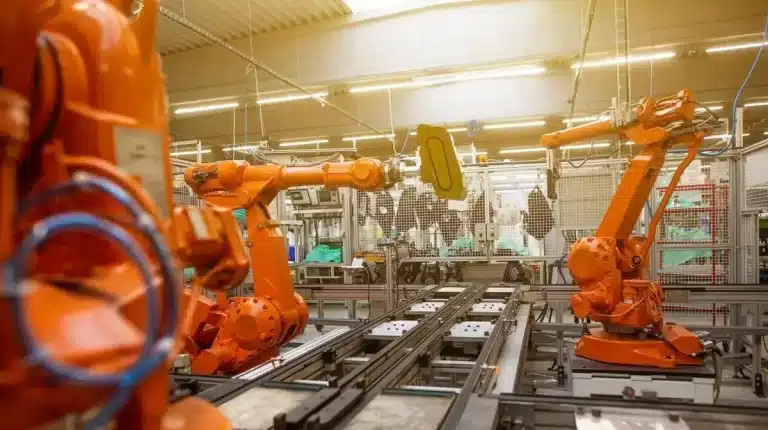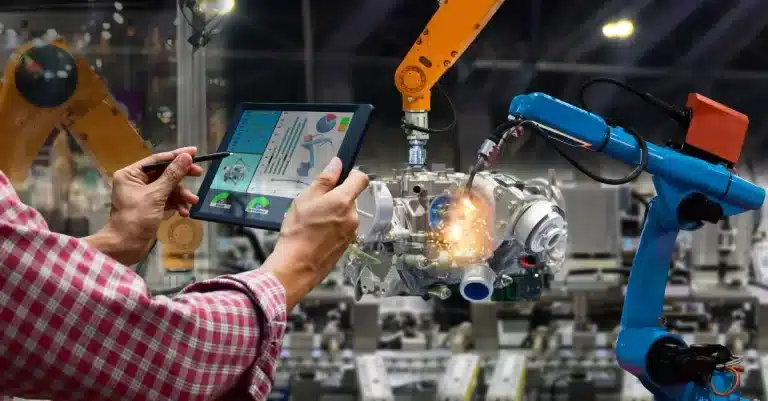A vision system for label inspection is essential in ensuring product quality and compliance with industry standards. It automatically verifies label accuracy, preventing defective products from reaching consumers and reducing costly recalls.
With advanced image processing and real-time error detection, these systems accurately inspect clarity, alignment, and completeness of labels at high speeds. They seamlessly integrate into existing production lines to enhance workflow efficiency and minimize operational downtime.
Whether dealing with barcodes or complex label designs, vision systems provide tailored solutions to meet diverse inspection requirements, promising further insights for manufacturers seeking ideal quality control.
Importance of Label Inspection
Guaranteeing accurate label inspection is vital in maintaining product integrity and compliance with industry regulations. In the competitive landscape of modern manufacturing, the deployment of a vision system for label inspection is critical in achieving these goals. These systems are designed to automatically verify the accuracy and quality of label prints, confirming that every product meets stringent quality control standards before reaching the consumer.
One of the primary advantages of employing a vision system for label inspection is its ability to conduct thorough product inspection at high speeds without compromising accuracy. Such systems utilize advanced image processing technologies to detect a wide range of potential issues, including misprints, incorrect labels, and barcode errors. This real-time inspection capability not only prevents defective products from leaving the production line but also minimizes costly recalls and reputational damage.
In addition to improving quality control, inspection solutions integrated within the production process facilitate seamless operation by greatly reducing downtime. Manual inspection methods are labor-intensive and prone to human error, whereas automated vision systems offer consistent and reliable performance. By flagging and addressing defects instantly, these systems guarantee that production lines operate smoothly and efficiently, boosting overall productivity.
Moreover, the implementation of sophisticated product inspection technologies is essential for regulatory compliance. Confirming that label prints are correct and legible is not merely a matter of quality control but also a legal requirement in many industries. Non-compliance can result in severe penalties and market withdrawals, making the investment in advanced inspection solutions a key component of a robust manufacturing strategy.
Key Features of Vision Systems
Building on the significance of maintaining stringent quality control and regulatory compliance, vision systems for label inspection incorporate several key features that enable them to perform their tasks with high efficiency and accuracy. One of the primary features is advanced image processing capabilities. This allows vision systems to capture high-resolution images of labels and perform detailed analysis to detect any discrepancies in text, graphics, or barcodes. These systems are also equipped to handle various types of labels, ensuring versatility across different products and packaging formats.
Another vital feature of label inspection systems is their ability to conduct real-time print quality inspection. This involves evaluating the clarity, alignment, and completeness of printed information on labels as products move along the production line. By identifying print defects immediately, manufacturers can address issues promptly, thereby minimizing waste and ensuring consistent product quality.
Integration with existing production systems is another hallmark of modern vision systems. Seamless integration facilitates the synchronization of label inspection processes with other quality assurance measures, ensuring a cohesive and efficient workflow. Additionally, these systems often come with user-friendly interfaces, enabling operators to set up, monitor, and adjust inspection parameters with ease.
Machine vision technology plays a pivotal role in the effectiveness of label inspection systems. Through the use of sophisticated algorithms and artificial intelligence, machine vision enhances the accuracy of defect detection and the reliability of inspection results. This advanced technology is essential for maintaining the high standards of quality assurance required in contemporary manufacturing environments.
Error Detection and Prevention
Error detection and prevention are essential in label inspection systems, as they directly impact product quality and compliance with industry standards. Advanced vision systems are designed to detect errors in real-time, identify discrepancies, and prevent defective products from reaching consumers. These systems utilize sophisticated image processing algorithms to guarantee that labels meet stringent inspection requirements.
A well-implemented vision system can identify various types of errors, including incorrect barcodes, misaligned labels, and missing information. By flagging these issues promptly, manufacturers can take corrective action before the product leaves the production line, thereby improving overall product quality.
| Error Type | Detection Method | Impact on Product Quality |
|---|---|---|
| Incorrect Barcodes | Image Processing Algorithms | Prevents Misidentification |
| Misaligned Labels | Positional Analysis | Guarantees Aesthetic Consistency |
| Missing Information | Text Recognition | Guarantees Regulatory Compliance |
| Defective Print Quality | Optical Character Recognition | Maintains Readability and Clarity |
Moreover, label inspection systems equipped with robust error detection capabilities can adapt to various inspection requirements across different industries. For example, pharmaceutical products demand high accuracy in label information to prevent health risks, whereas consumer goods focus more on aesthetic presentation and brand consistency.
Implementing error detection mechanisms within vision systems not only safeguards product quality but also reduces waste and operational downtime. Early detection of defects allows for immediate rectification, minimizing the risk of large-scale recalls and improving consumer trust. By integrating these advanced systems, manufacturers can guarantee that their products consistently meet industry standards and customer expectations.
Integration With Manufacturing Processes
Integrating vision systems for label inspection with manufacturing processes is vital for maintaining a seamless and efficient production flow. These systems are designed to guarantee that labels are accurately printed and correctly applied, which is essential for product quality and regulatory compliance. By embedding vision inspection directly into the manufacturing line, companies can perform real-time assessments and immediately address any discrepancies, thereby minimizing disruptions and downtime.
The implementation of label inspection systems involves sophisticated inspection software that can be tailored to specific production needs. This software is capable of analyzing various label attributes, including text accuracy, barcode readability, and alignment. These inspections are conducted at high production speeds, guaranteeing that even rapid manufacturing environments do not compromise the thoroughness of quality checks. The ability to sustain high-speed inspections without sacrificing accuracy is a significant advantage in high-volume production settings.
Moreover, vision inspection systems seamlessly integrate with existing manufacturing infrastructure. They can communicate with other machinery and control systems to provide synchronized operations and extensive quality management. For instance, when a defect is detected, the system can trigger an immediate response, such as halting the production line or isolating the defective item. This level of integration guarantees that issues are swiftly addressed, preventing defective products from reaching the market.
Types of Vision Systems
Vision systems for label inspection are commonly categorized into several types based on their specific functionalities and applications. Each type is designed to enhance product quality by ensuring that labels are accurately printed, properly aligned, and compliant with predefined inspection criteria.
One prevalent type is the area scan vision system, which uses vision tools to capture images of labels on products as they move along a conveyor. These systems are adept at detecting a wide array of defects, such as smudges, misprints, and missing information. They are particularly effective for applications requiring extensive coverage of the label’s surface.
Another vital type is the line scan vision system, which is ideal for high-speed production lines. These systems utilize high-resolution cameras to scan labels line by line, making them highly effective for continuous inspection processes. Line scan systems are often used for barcode reading and verifying the presence of essential information, ensuring that each product meets stringent inspection criteria.
Barcode reading systems are specialized vision systems focused on decoding various types of barcodes, including 1D and 2D codes. These systems play a significant role in ensuring traceability and inventory management, as they verify the accuracy and readability of barcodes on labels.
Lastly, smart camera systems integrate vision tools directly within the camera, offering a compact and versatile solution for label inspection. These systems are user-friendly and can be easily configured to perform multiple inspection tasks, such as checking label positioning, verifying text, and identifying defects.
Choosing the Right System
Selecting the appropriate vision system for label inspection involves considering factors such as production speed, label complexity, and specific inspection requirements. To guarantee ideal product quality, the chosen system must be capable of handling the intricacies inherent in your production environment. Several criteria are essential for making an informed decision.
- Production Speed: High-speed manufacturing environments demand vision systems that can keep pace without sacrificing accuracy. The system should be capable of inspecting labels at rapid rates to avoid bottlenecks and guarantee seamless operations. High-speed cameras and processors are critical in this regard, as they can capture and analyze images in real-time.
- Label Complexity: The level of detail and variability in your labels can considerably impact the type of vision system required. Complex labels with intricate designs or multiple elements necessitate advanced image processing capabilities. Systems equipped with high-resolution cameras and sophisticated algorithms can precisely identify defects and discrepancies in intricate label designs.
- Specific Inspection Requirements: Different production lines may have unique inspection needs, such as verifying barcodes, checking text alignment, or inspecting for specific color codes. Tailoring the vision system to these specific requirements can help in minimizing operator error and guaranteeing compliance with industry standards. Customizable software and adaptable hardware components are invaluable in meeting these specialized demands.
Conclusion
To sum up, vision systems for label inspection are indispensable in contemporary manufacturing, ensuring precise adherence to industry standards.
Advanced image processing capabilities detect errors and defects in real-time, markedly reducing downtime and improving operational efficiency.
Integration with manufacturing processes streamlines production and distribution, maintaining high product quality.
As manufacturing demands evolve, these systems’ continual advancements are critical for compliance, optimized production, and seamless logistics within the supply chain.


